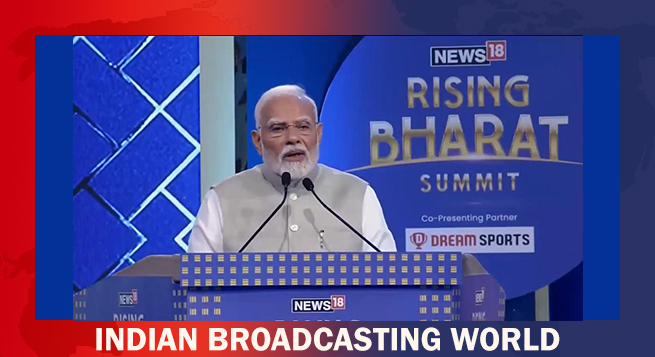For nearly as long as the modern entertainment industry has offered content to the public, it has relied upon advertising and on subscription services for its financial lifeblood.
With the emergence of the Internet, the means to deliver movies, TV shows, and other forms of content have changed, but the advertising and subscription models have endured.
But while the legitimate means of distributing entertainment has evolved, so have the tactics of criminals who exploit stolen content for profit.
These criminals now offer stolen or pirated movies, TV shows, games and live events illegally through websites and, to an increasing degree, through illicit devices and apps. And it is big money, in large part funded by advertising, including by well-known and iconic brands, a new report, titled ‘Breaking (B)ads: how advertiser-supported piracy helps fuel a booming multi-billion dollar illegal market’, stated.
The report is the result of a year of investigation of the content theft business model and how it generates advertising revenues.
The report, prepared by the online consumer safety group Digital Citizens Alliance and piracy and advertising specialists White Bullet Solutions Limited, reveals that the bad actors who operate in the illegal, underground market for pirated movies, TV shows, and other forms of content theft are reaping an estimated $1.34 billion in annual revenues through advertising on websites and illicit streaming apps.
In doing so, they harm creators, damage the reputation of brands and the overall advertising ecosystem, expose consumers to fraud and malware, and pose new challenges for law enforcement, via both websites and apps.
The highlights of the year-long investigation of ad-supported piracy are the following :
- The top websites that offer stolen content generate $1.08 billion in global annual ad revenue. For the major players, it’s big business: the investigation found that the top five of these websites made an average of $18.3 million in revenue from advertising. Many of these websites are in a constant state of churn, meaning they are changing domains and redirecting to avoid enforcement and bypass advertising blocklists.
- The top apps that offer stolen content generate $259 million in global annual ad revenue. Just as with websites, piracy apps and advertising can be quite lucrative. The top five of these apps made an average of $27.6 million in ad revenue. These apps remain a smaller piece of the piracy pie than websites, but they are growing at a more rapid pace. As they appear to be more profitable than websites (commanding high advertising bid values and generating greater margins), they are likely to continue to proliferate.
- The brands who place the most digital ads overall, which include many of the Fortune 500 companies (“Major Brands”), are among the key revenue sources for pirate operators. Due in large part to the proliferation of advertising on piracy apps, these Major Brands paid pirate operators roughly $100 million in the last year to advertise on their platforms. One in four ads on piracy apps are from well-known companies. This shift to apps comes after a concerted effort over the last eight years by these brands to stop their ads from showing up on illicit websites. The emergence of piracy apps threatens to undermine this progress.
- Amazon, Facebook, and Google dominated the list of Fortune 500 companies found on these piracy apps. Ads for these three well- known companies accounted for 73 percent of all Major Brands that appeared frequently on piracy apps during the year-long investigation. That means these three companies are supporting these piracy operators with potentially tens of millions of dollars in advertising on piracy apps alone.
- There has been a recent significant decline in Amazon-branded ads showing up on piracy websites and apps. This demonstrates that the issue can be addressed when a brand makes it a priority.
- Piracy websites and apps are highly risky for consumers. Roughly one in three piracy websites and apps have risky advertising that exposes consumers to fraud and malware.
- While piracy causes direct harm to creators and others who lose income when their content is stolen, the impact goes well beyond the entertainment industry. Consumers who use piracy websites and apps are three times more likely to be exposed to malware, according to a recent survey. And Major Brands face reputational risks when their advertising appears on illicit websites.
As the piracy environment grows, so does the threat and challenge it poses. In August 2020, Digital Citizens issued a report with content protection specialist NAGRA that found that piracy service operators generate over $1 billion in the sale of illicit subscription services, according to an executive summary of the report.
In combination with this report focused on advertising revenues, it gives the entertainment industry a better sense of the scope of the overall piracy ecosystem – and it is enormous.
Through advertising and subscriptions, the operators of piracy platforms are estimated to generate a combined $2.34 billion dollars in annual revenue.
The sheer size of the piracy ecosystem should be troubling for policymakers, the advertising industry, and those dedicated to consumer protection.
Indeed, the $2.34 billion figure undercounts the profitability of the industry. It reflects only a portion of piracy websites and apps; it doesn’t include the income the operators make from partnering with hackers to spread malware through the websites and apps consumers use to watch pirated content; and it does not include the income generated from peddling extracted personal data or selling the illicit streaming devices themselves.
 Rahul Sinha takes charge of Zee News’ DNA
Rahul Sinha takes charge of Zee News’ DNA  JioStar vice-chair Uday Shankar on surge in streaming subs, trade tariff challenges
JioStar vice-chair Uday Shankar on surge in streaming subs, trade tariff challenges  AIDCF team discusses industry issues with Vaishnaw
AIDCF team discusses industry issues with Vaishnaw  PM Modi: WAVES will empower Indian content creators go global
PM Modi: WAVES will empower Indian content creators go global  Sunrise Spices, Hoichoi celebrate Bengal’s essence with ‘Swadkahon’ cultural showcase
Sunrise Spices, Hoichoi celebrate Bengal’s essence with ‘Swadkahon’ cultural showcase  Spotify launches Ad Exchange, generative AI ads in India
Spotify launches Ad Exchange, generative AI ads in India  Riteish Deshmukh unveils trailer of ‘ Zapuk Zupuk’
Riteish Deshmukh unveils trailer of ‘ Zapuk Zupuk’  John Malone to step down from WBD board
John Malone to step down from WBD board  ‘Khudaya Ishq’ song from ‘Abir Gulal’ released today
‘Khudaya Ishq’ song from ‘Abir Gulal’ released today 








